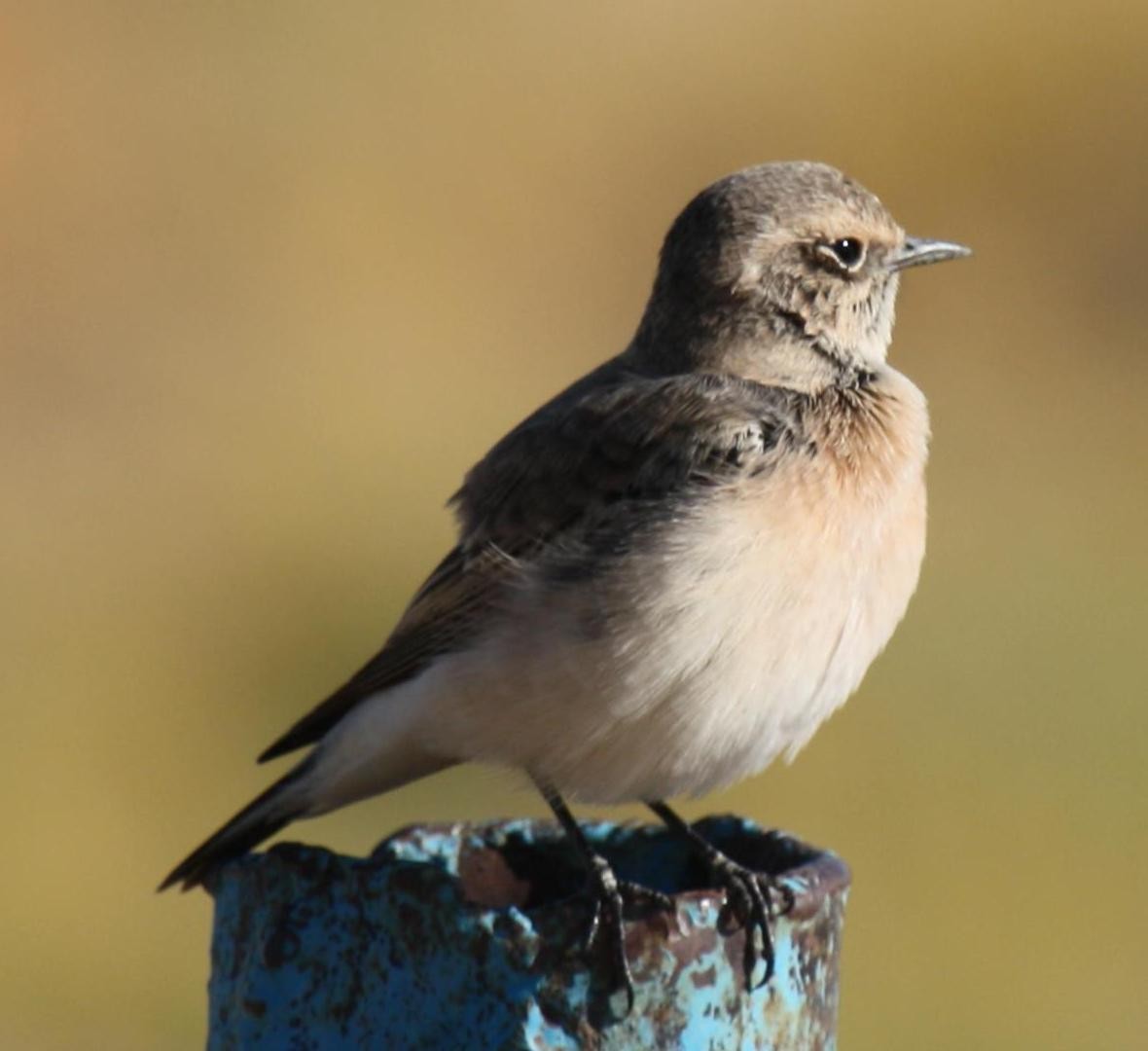Pied Wheatear
A species of Wheatears Scientific name : Oenanthe pleschanka Genus : Wheatears
Pied Wheatear, A species of Wheatears
Botanical name: Oenanthe pleschanka
Genus: Wheatears
Content
Description General Info
 Photo By Oenanthe_pleschanka_3.jpg , used under CC-BY-SA-2.0 /Cropped and compressed from original
Photo By Oenanthe_pleschanka_3.jpg , used under CC-BY-SA-2.0 /Cropped and compressed from original Description
The crown, nape and neck of the adult male pied wheatear are pale brown, the feathers having pale tips and white bases. The mantle and scapulars are black with buff tips to the feathers. The back, rump and upper tail-coverts are creamy-white. The central pair of tail feathers are black with white bases but the rest are white with black tips, the outer pair having rather more black than the rest. There is a narrow buff-coloured line extending from the base of the beak to over the eye and the lores, ear coverts, chin, throat and upper breast are black. The rest of the breast is buff, the belly creamy-buff and the underwing coverts and axillaries are black tipped with white. The wing feathers are black with tips and edgings of creamy-buff. The bird moults in late summer and by the following year, the edges of the feathers are abraded and the crown and nape are white and the mantle, scapulars and wings black. The beak, legs and feet are black and the eyes dark brown. The length is about 5.75 inches (146 mm). The adult female is similar to the male but the mantle and scapulars are brown with buff tips rather than black, the tail feathers are brown and white and the wing feathers brown with buff tips. Again, abrasion wears of the tips of the feathers and the bird becomes more uniformly brown and white with creamy buff underparts. The female is slightly smaller than the male. The juvenile is similar to the female but the feathers of the brown upperparts have pale centres near the tips giving the bird a speckled appearance. The voice is a harsh zack zack. The song is low-pitched and musical and is performed by the male in early summer and again in August. It consists of a variable, imitative series of notes, sometimes lark-like and sometimes whistling, pouring out in a continual stream. It is sung from a perch on a rock or other high place or in the air during flight. 
Size
16 cm
Colors
Brown
Black
Yellow
White
Nest Placement
Ground
Feeding Habits
Pied Wheatear's diet comprises mostly invertebrates like ants, beetles, and various larvae, supplemented with fruits and seeds. It forages actively on the ground, employing a catch-and-consume strategy. Pied Wheatear has no unique dietary preferences, but it has a diverse intake, ensuring nutritional balance.
Habitat
Pied Wheatear thrives in open and arid environments, including semi-deserts, stony plains, and lightly wooded areas. Preferring flat terrains with sparse vegetation, they inhabit steppe landscapes, rocky outcrops, and valley bottoms. They are adaptable to elevations up to 3500 meters. In winter, pied Wheatear can be found in Africa's treed plains and montane moorlands.
Dite type
Insectivorous
General Info
Feeding Habits
Bird food type
Behavior
The pied wheatear is rather shy but is conspicuous when spotted. It is not gregarious and single birds or pairs are found in rough, rocky countryside. It likes to perch on a bush or rock, alert and looking around and bobbing its tail up and down. When it spots a prey item it swoops down to the ground briefly to pick it up before returning to its perch. Its diet consists of small invertebrates such as ants, grasshoppers, beetles, flies and moths and their larvae, spiders and mites, and seeds are also eaten. 
Distribution Area
The pied wheatear is native to Southeast Europe and Western Asia. The breeding range extends from Romania and Bulgaria to Siberia, Altai and Mongolia and southwards to the Caucasus, Transcaspia, Turkestan, Iran and Afghanistan. It occurs at altitudes of up to 2,000 metres (6,600 ft) in the Altai and up to 3,000 metres (9,800 ft) in the Tien Shan. It migrates to Northeast Africa, passing through Southwest Asia on the way. In the breeding season it is found in rough open country, steppes with scant vegetation, stony slopes and hilly country. In its winter quarters it is found in similar locations with rock, scree and on plains with thorny scrub. It sometimes visits grassy areas and gardens. It has occurred as a vagrant in Italy, Heligoland and Scotland. 
Species Status
Not globally threatened.
Scientific Classification
Phylum
Chordates Class
Birds Order
Perching birds Family
Old world flycatchers Genus
Wheatears Species
Pied Wheatear